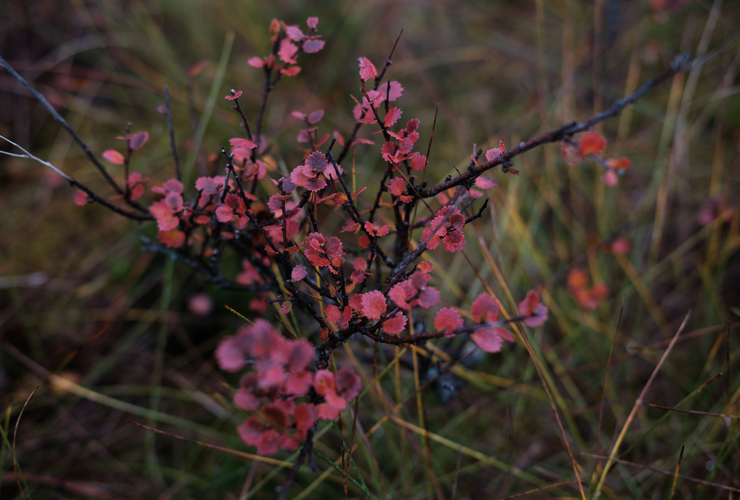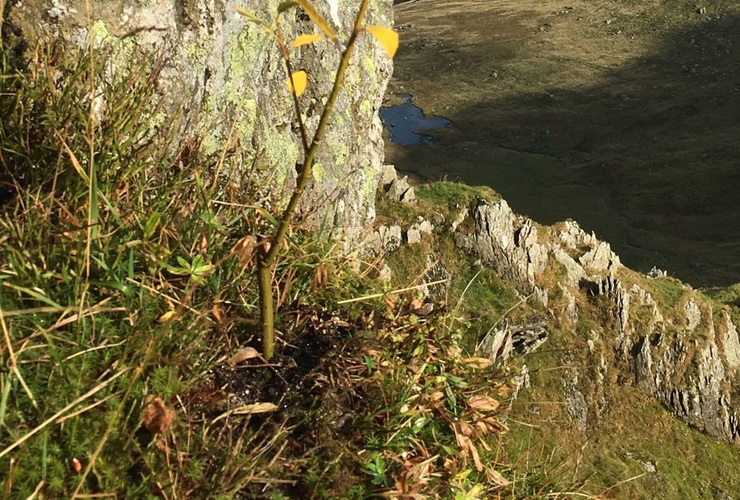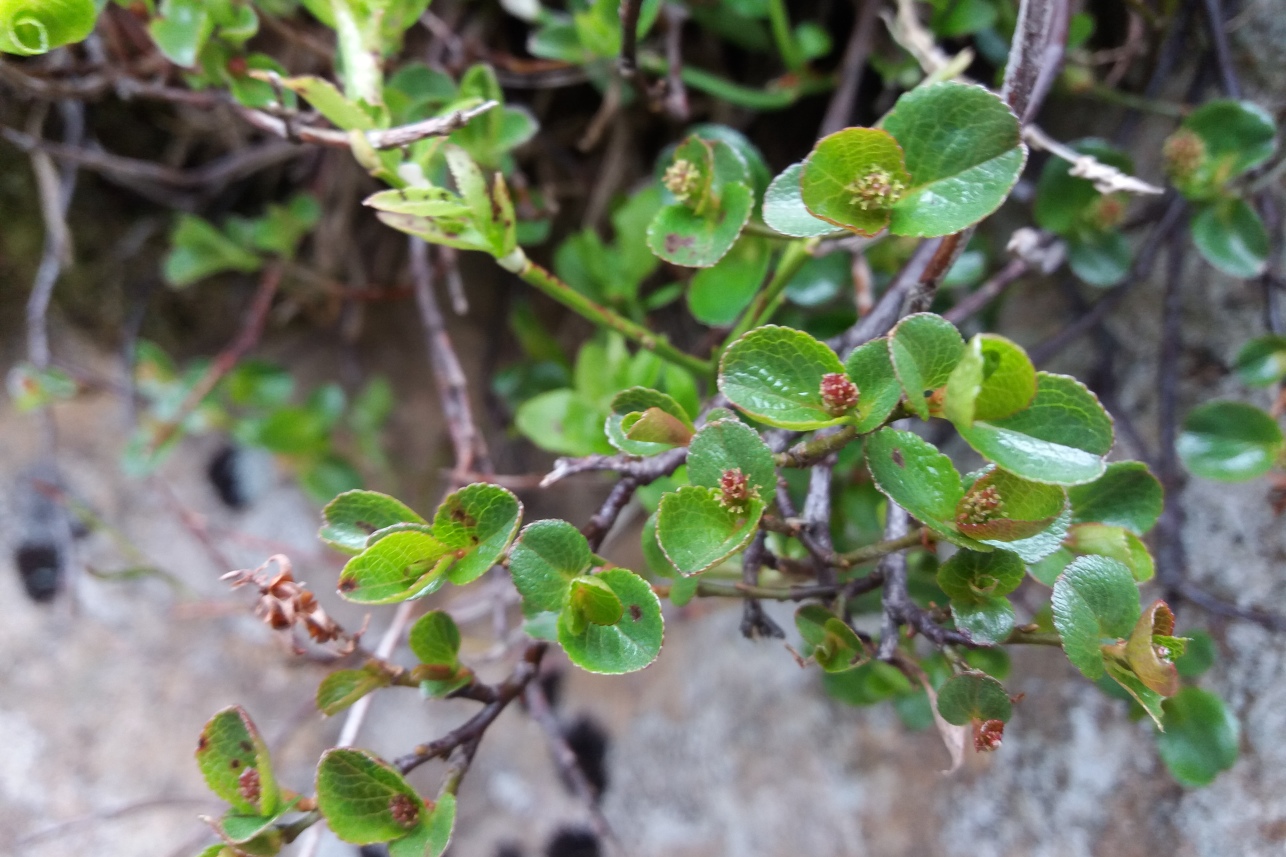Missing link
Izzy Filor highlights the plight of mountain woodland and explores some of the efforts being made to save this increasingly rare habitat

^ Dwarf birch
MANY OF those who enjoy exploring Scotland’s wild places will be accustomed to the barrenness of the upland landscape. The term ‘wet desert’ was coined by the 20th century naturalist Frank Fraser Darling and still provides an accurate description of the lack of biodiversity throughout much of the Scottish uplands.
Look at almost identical habitats in places such as southwest Norway and there are hillsides covered in downy birch, juniper and pines, all extending well above the natural treeline. But this mountain woodland or montane scrub habitat is almost nonexistent in Scotland and other upland areas of the UK.
What little remains is rapidly declining, clinging to cliffs away from grazing animals and often so inaccessible that spotting it requires a tip-off and a good pair of binoculars. Sadly, these remnant populations often comprise so few or such genderimbalanced plants that, without management intervention, their terminal decline is a certainty.
An ecosystem comprised of scattered trees and tall shrubs, mountain woodland forms a transition between the natural treeline and higher alpine heath. It comprises three rough categories of specialist montane plants: dwarf birch, alpine willows and alpine juniper. This habitat can also contain other, non-specialist species such as downy birch, rowan and aspen, which all grow happily – albeit in a dwarf form – at higher altitudes.
What little remains is rapidly declining, clinging to cliffs away from grazing animals and often so inaccessible that spotting it requires a tip-off and a good pair of binoculars.
As a habitat, mountain woodland provides shelter for upland birds such as ring ouzel and black grouse, plus has the potential to support breeding pairs of birds that rarely nest in Scotland, including brambling and fieldfare. Several species of sawfly and moth are also thought to benefit from increased upland scrub habitat.
Understudied as well as underrepresented, the importance of mountain woodland in helping limit the effects of climate change – from soil stabilisation to water retention – requires urgent recognition from statutory funding. As most mountain woodland species grow slowly, their carbon capture potential is small, but should not be ignored.
Restricting growth
Historic deforestation and present land management practices have damaged and continue to restrict natural regeneration of many types of woodland, including rare mountain woodland habitats.
Deforestation accelerated from the 18th century onwards with the introduction of extensive sheep farming, while red deer numbers were allowed to rise exponentially for sport. Over the last 40 years alone, wild red deer populations have doubled. Today, in combination with upland sheep farming, high levels of grazing continue to suppress natural regeneration of trees and scrub even at the highest of altitudes.
Muirburn is another practice that continues to have a destructive effect on the regeneration of upland areas, permanently damaging natural seed sources, existing vegetation and vital carbon stores.
However, while it is generally thought that overgrazing and muirburn are the major barriers to mountain woodland expansion, it should not be ignored that many of these specialist montane species are also fairly fussy about where they grow. Several of the montane willows prefer limestone-influenced soils as well as bare, open ground to allow their seed to take hold.
Equally, it is thought that they are dependent on late snow lie, which protects their thinly bedded roots from frost heave (the snow acts as insulation for the plants, providing a steady temperature during the coldest months) and provides a physical barrier from grazing herbivores during winter.
That said, dwarf birch is also found in low-nutrient soils. There’s currently little research to suggest why this might be the case – perhaps this plant has adapted to high grazing pressures by growing in those places least favoured by sheep and deer?
It is undeniable, however, that climate change will and likely is already impacting these upland specialists. With snow fall, let alone snow lie, becoming increasingly uncertain, fragile populations need to be bolstered before they are lost for good. Dwarf birch, for example, is likely to see almost total range loss in Scotland by the end of the century due to climate change, and its production of viable seed is forecast to dramatically reduce in warmer climates.
The spread of juniper will likely also be hindered further by a changing climate. Its seed is highly dormant, requiring at least two seasonal cycles to break the dormancy before germination. As winters grow ever more variable, the lack of consistency needed to break the dormancy cycle will only be cause for further concern.

^ Montane willow, Helvellyn
Restoration efforts
Recognising the vulnerability of this specialist habitat, the John Muir Trust recently joined the Mountain Woodland Action Group – a partnership of organisations and individuals that advocates the importance of this habitat and supports restoration projects and research. For its part, the Trust is now exploring how best to increase upland tree cover across its properties and expand existing montane populations.
This work is well underway at Glenridding in the Lake District where huge effort has gone into saving one of the last remaining populations of downy willow in England. In partnership with Natural England, Trust staff continue to boost a remnant population of just 23 downy willows. Over the past 18 years, more than 1,000 montane willows have been planted, all grown from propagated cuttings. In recent years, this work has been greatly enhanced thanks to the help of local volunteer growers from the Ullswater valley.
The Trust is exploring how best to increase upland tree cover across its properties and expand existing montane populations
At East Schiehallion, where my work is predominantly focused, the Trust works alongside members of the Heart of Scotland Forest Partnership to promote the importance of this fragile habitat. In 2018, the first plants of a tiny remnant population of montane willows were discovered on the site (they’re so small and overgrazed that it’s possible to walk over them and not even notice). And last year, a single net-leaved willow plant was discovered on the slopes of Schiehallion – a new record for the area, but one that is functionally extinct unless supplementary planting happens quickly.
These willows are now the focus of yearly monitoring as part of a much wider project – made possible thanks to the generosity of the Lucie Allsop Memorial Fund – to restore a large area of the site with mountain woodland. The project aims to show visitors the potential of upland areas as well as highlight the land management issues faced.
Planting should get underway in 2021 with the aim that, within five years, the majority of the site will have been planted at low density and begun to show signs of natural regeneration (montane willows included).
Similar projects elsewhere in Scotland, many of which are much further ahead, have begun to reveal the benefits of managing upland areas with mountain woodland habitats in mind. Work by the RSPB, Borders Forest Trust and National Trust for Scotland at sites such as Abernethy Forest, Carrifran and Ben Lawers respectively all serve as exemplar mountain woodland conservation efforts.
Mountain woodland truly has a mountain to climb if it is to stage a recovery. But increased awareness of this threatened habitat and, crucially, a reduction in both grazing pressure and muirburn will go a long way towards restoring the kind of upland biodiversity that has been missing for so long.
About the author
Izzy Filor is the Trust’s Mountain Woodland Officer
- This article first appeared in the Autumn 2020 edition of the John Muir Trust Journal. If you would like to receive our Journal twice a year, please consider joining the Trust as a member.
